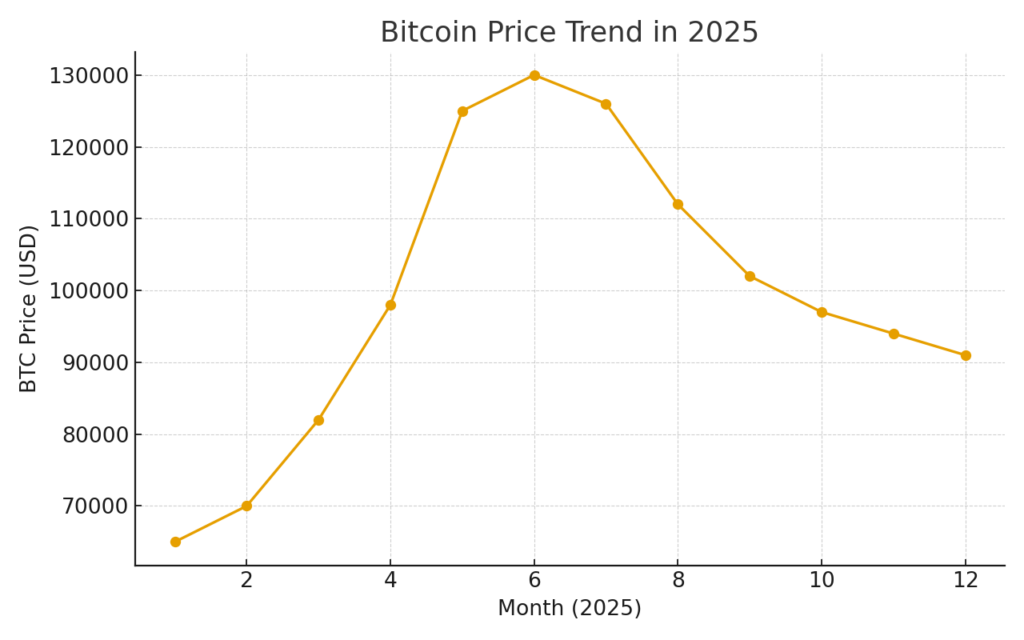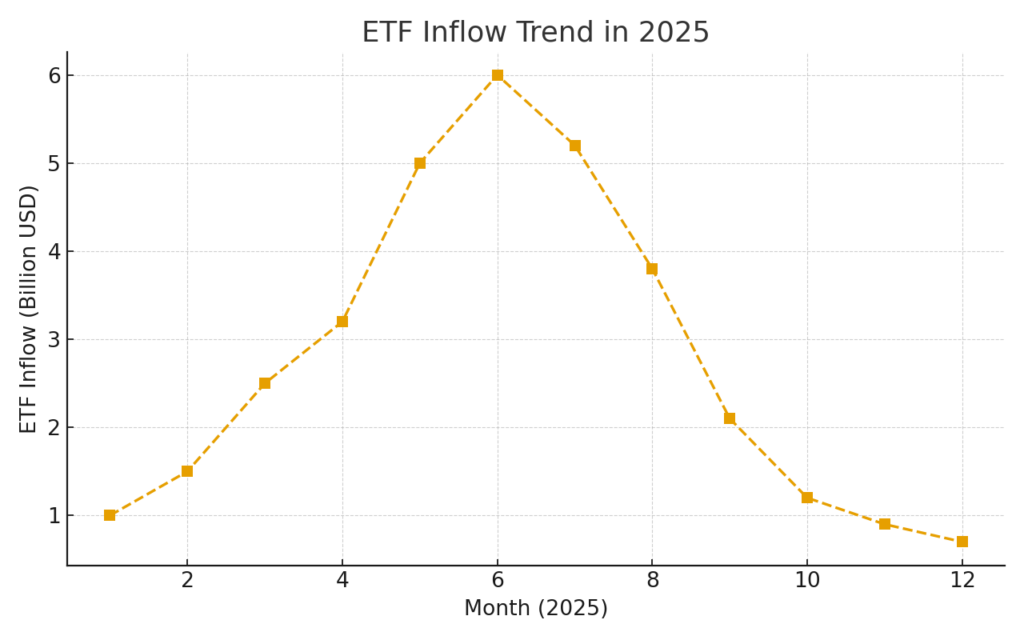
Main Points :
- The conventional four-year halving cycle of Bitcoin no longer appears to reliably dictate price moves.
- Liquidity flows—especially via crypto ETFs and tokenised asset trading—are increasingly the dominant driver of price direction.
- Despite a favourable macro-environment (rate cuts, end of quantitative tightening), crypto has lagged as capital shifts to equities, AI and prediction markets.
- Stablecoins are one of the few crypto segments showing growth; ETF/DAT inflows remain stalled.
- For investors seeking new crypto assets or yield opportunities, monitoring liquidity signals (ETF flows, stablecoin growth, institutional entry) matters more than scheduling around halving events.
- If ETF/DAT flows revive, Bitcoin could climb into the US$95,000–US$130,000 range; if flows weaken, a slide toward US$90,000 or lower is possible.
1. The Halving Cycle: Legacy of Bitcoin’s Four-Year Rhythm
For over a decade, Bitcoin’s market rhythm was anchored in its block-reward halving events, which occur roughly every four years: the miner reward is cut in half, reducing new supply, thereby increasing scarcity and fuelling a price surge. The narrative went: halving → supply squeeze → speculative mania → new all-time high.
But recent commentary from major market-maker Wintermute argues that this script no longer holds. The reward for miners currently stands at ~3.125 BTC per block post-April 2024 halving, or roughly 450 BTC per day. Although meaningful, this volume of new issuance is now dwarfed by institutional flows in ETFs and other crypto-financial products. In other words, in a mature market the supply side isn’t the main throttle for price any more.
2. Liquidity Is the New Price Engine

What has replaced the halving script is liquidity. The Wintermute report is blunt: “the four-year cycle is no longer relevant” and “liquidity, not miner supply, now drives performance”.
For example, during the rally into October 2025, global crypto ETFs recorded a week of about US$5.95 billion of inflows; on one day, about US$1.2 billion flowed in. These flows coincided with Bitcoin touching near US$126,000.
Compare that to the ~450 BTC/day inflow (≈US$45 m at US$100k/BTC) via mining: the ETF flows can be 25 × or more the size of daily mining issuance.
Consequently, when ETF flows slowed later in October, the price fell back toward the US$100,000 range. The direct correlation between institutional flows and price has become more apparent than the correlation with halving events.
3. The Macro Context: Liquidity Plenty but Mis-Allocated
Interestingly, the underlying macro-environment remains supportive: central banks are cutting interest rates and winding down quantitative tightening; global liquidity is expanding.
Yet crypto markets have failed to fully benefit. The culprit: the new liquidity is being channelled into equities, AI-related sectors and prediction markets — not crypto.
Wintermute calls this a “flow problem” rather than a liquidity shortage.
As a result, cryptocurrencies such as Bitcoin and Ethereum remain range-bound (Bitcoin near US$104,000, Ethereum near US$3,400) even when macro risk-assets are rallying.
4. Stablecoins, ETFs & DATs: Signals to Watch
In the new regime, three liquidity “pipes” matter:
- Stablecoins: These have shown growth, reflecting capital on the sidelines ready for deployment.
- Exchange-Traded Funds (ETFs): Inflows here are a major price driver for Bitcoin. When they slow, price weakness follows. The recent week ending October 31 saw US$600 m outflows from spot Bitcoin ETFs.
- Tokenised Asset Trading (DATs): These digital-asset vehicles facilitate institutional capital deployment. Wintermute notes DAT activity has “dried up”.
For those seeking new crypto assets or income streams, monitoring these metrics is key. A revival in ETF or DAT flows could trigger a broad altcoin breakout; conversely, absence of flows argues for caution.
5. What This Means for Bitcoin’s Price Range


In practical terms, what does this shift mean for Bitcoin’s near-term trajectory? According to analysis drawn from the Wintermute note and other market commentary:
- If ETF/DAT flows remain positive but not explosive, Bitcoin may trade in a base case between US$95,000 and US$130,000.
- If institutional flows dry up, particularly ETFs retreat and stablecoin growth stalls, Bitcoin may fall toward the US$90,000 zone or lower.
The important takeaway: miners’ issuance or next halving matter less than where the capital is going.
6. Implications for Crypto Investors & Practitioners
For our audience—those seeking new crypto assets, income opportunities, and practical blockchain applications—the key messages are:
- Look beyond Bitcoin halving dates: Investment timing should reflect liquidity flows rather than calendar events.
- Monitor institutional signals: ETF flows, stablecoin issuance, DAT activity are now meaningful leading indicators.
- Broaden scope beyond Bitcoin: As Bitcoin becomes more institutional, altcoins and niche chains may decouple, offering alpha if they capture fresh liquidity.
- Consider blockchain applications around liquidity infrastructure: Projects enabling tokenised assets, on-chain ETFs, or stablecoin collateralisation could benefit in this structure.
- Risk-management is critical: In a liquidity-driven market, reversals can be swift—outflows may trigger sharp drops even absent negative fundamentals.
Conclusion
The narrative of Bitcoin’s four-year halving cycle as the master key to its price dynamics appears increasingly outdated. Instead, a new paradigm has emerged: liquidity flows—particularly via ETFs, tokenised assets and stablecoins—now wield greater influence over price than mining issuance or halving schedules. The macro-environment may be supportive, but crypto markets are underperforming because capital is currently being deployed elsewhere. For investors hunting the next crypto opportunity, the message is clear: shift focus from calendar-based timing to flow-based signals. Monitor institutional entrants, stablecoin expansions, ETF/DAT movements—and consider building exposure where these flows might arrive next. Doing so may prove more fruitful than awaiting the next halving.
In sum: the halving clock still ticks, but the market’s heartbeat is the flow of money.

